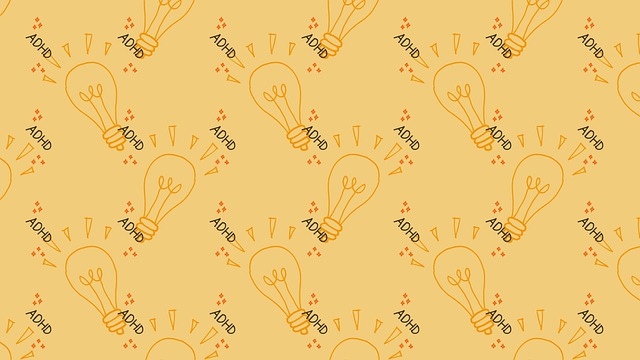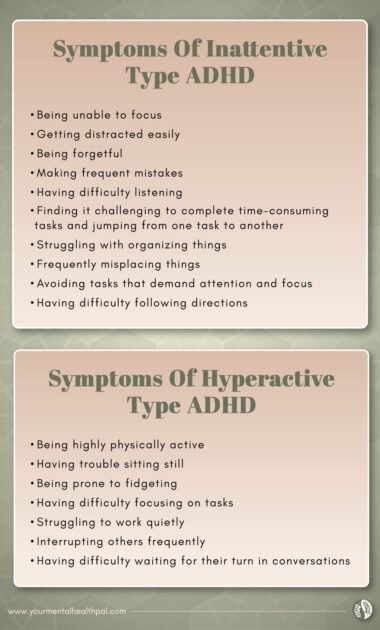If a few hours of scrolling on TikTok has convinced you that you most certainly have attention-deficit/hyperactivity disorder (ADHD), you are in good company.
And if all those videos have left you wondering, What is ADHD after all? Then, you are in the perfect place to get started.
The mainstream culture usually associates ADHD with the image of a hyperactive, disruptive, and antsy kid. It is rarely taken seriously as other conditions. However, it should be.
A new study by Child: Care, Health and Development has found that women with ADHD are thrice as likely to have suicidal tendencies, generalized anxiety disorder, and sleep disorders.
Not just that!
They are twice as likely to report substance abuse, depressive disorders, and smoking. The effects are not just psychological. These women also are more likely to have chronic pain and suffer from childhood abuse (both physical and sexual).
So, despite an array of alleged definitions of what ADHD is and documentation of its signs and symptoms, there’s so much more behind the neurological disorder that does not meet the eye.
ADHD is a neurodevelopmental disorder that affects people’s lives, relationships, how they seem and perceive themselves and the world around them, and pretty much everything else. This is why understanding what ADHD is and knowing how it affects lives can make all the difference.
To help you get started, we have compiled a straightforward guide that will help break down what ADHD is, its symptoms, types, causes, diagnosis, and treatments.
But before we get started, here’s something important.
Mental and neurological health are diverse and complex. They exist on a spectrum, and every individual has their own experiences. Therefore, don’t start diagnosing yourself with the knowledge you get by reading a few articles on the Internet (though we are incredibly grateful to you for stopping by to enhance your understanding of an important topic). If you find this article helpful or resonate with the symptoms explained in it, consider this as the beginning of your journey of getting the right help.
That’s it. Let’s dive in!
What Is ADHD?

As per official estimates, ADHD affects 9% of children in the US, making it one of the most commonly diagnosed neurodevelopment disorders.
The Diagnostic and Statistical Manual of Mental Disorders (DSM-V) characterizes ADHD as a constant pattern of inattention or hyperactivity-impulsivity that affects a person’s regular functioning.
Basically, this means that those with ADHD have difficulty controlling their impulses, paying attention, and making the right decisions. These disruptions are severe enough to complicate their academic, personal, and professional lives.
ADHD is usually diagnosed in children aged six to 12, but symptoms can appear at any age. In fact, as per estimates, symptoms of ADHD can appear as early as ages 3-6. Around 60% of children with ADHD have symptoms well into adulthood.
ADHD usually affects brain networks and cognitive pathways in people. So, it’s not an IQ issue, as people normally presume. It’s more of an internal communication.
Scans show that people with ADHD struggle with top-down control, i.e., the brain’s executive signals about where to focus and when. Therefore, for those with ADHD, it’s hard to stay put on a task when something distracting comes along the way. But, they can be incredibly focused when engaged and stimulated.
What Causes ADHD?
The exact causes of ADHD are unclear in both children and adults. However, research to date shows that it’s a combination of the following that plays a key role:
- Genetics: ADHD is found to run in families. A child with ADHD has a 1 in 4 chance of having a parent with ADHD. There are also chances of another close family member, like a sibling, having the same condition.
- Brain function: As per research by PLOS ONE, people with ADHD are found to have lower brain activity in areas that control attention.
- Significant head injuries might also be a probable cause of ADHD.
- Prenatal exposure, like smoking and alcohol consumption, can lead to ADHD.

What Are The Different Types Of ADHD?
A lot of people might look at ADHD from a one-dimension perspective. However, it’s not a one-size-fits-all condition. Within ADHD, there are three different subtypes of the disorder. Your ADHD symptoms depend a lot on the types you have.
Here are the three types of ADHD:
1. Predominantly Inattentive Type: With this, paying attention to things like lectures, books, etc., is a struggle. You might feel like you are constantly daydreaming and getting lost in the web of your thoughts, and therefore, concentrating on anything feels hard. Managing tasks and following directions also gets difficult. No hyperactivity-type symptoms are generally present in the inattentive type of ADHD.
2. Predominantly Hyperactive-Impulsive Type: Those with this type of ADHD constantly feel restless, find it challenging to sit still for longer durations, and interrupt others frequently. They exhibit reckless behavior and are prone to accidents and injuries. People with hyperactive type ADHD indulge in hurried decision-making. This is the least common type of ADHD.
3. Combined Type: People with combined type of ADHD exhibit the traits of both hyperactive and inattentive type in equal measures.
What Are The Symptoms Of ADHD?

As mentioned above, ADHD can look and feel different for all people. The symptoms of ADHD in children are different from those in adults. In children, symptoms of ADHD before the age of six are generally reflected in more than one setting (for instance, at home and school). These symptoms are severe enough to disrupt the daily functioning of the child.
Symptoms Of Inattentive Type ADHD
- Being unable to focus
- Getting distracted easily
- Being forgetful
- Making frequent mistakes
- Having difficulty listening
- Finding it challenging to complete time-consuming tasks and jumping from one task to another
- Struggling with organizing things
- Frequently misplacing things
- Avoiding tasks that demand attention and focus
- Having difficulty following directions
Symptoms Of Hyperactive Type ADHD
- Being highly physically active
- Having trouble sitting still
- Being prone to fidgeting
- Having difficulty focusing on tasks
- Struggling to work quietly
- Interrupting others frequently
- Having difficulty waiting for their turn in conversations
Symptoms of ADHD in Adults
While once thought of as a sole childhood disorder, research has revealed that a lot of people can have symptoms of ADHD that can exist well into their adulthood. However, the signs of ADHD in adults are much easier to miss as they are much more subtle than in children.
Here are the common symptoms of ADHD in adults:
- having a lack of self-confidence,
- missing important details,
- having difficulty in focusing and organizing,
- forgetfulness,
- being restless,
- constantly feeling on edge,
- easily getting agitated,
- making frequent mistakes and
- taking unnecessary risks.
How To Get Diagnosed With ADHD?

ADHD is not one-dimensional; it is categorical. This means there lies a broad spectrum of symptoms and functionality in the manifestation of the condition among different individuals. Diagnosing ADHD is not about looking for black-and-white markers. It’s more about looking and assessing a wide range of symptoms.
An ADHD diagnosis is generally made by interview followed by specific tests and screens if required. The evaluation can be done by a neurologist, mental health specialist, or even a primary healthcare provider.
While diagnosing a child, the healthcare provider also interviews parents, teachers, and relatives. This helps them gauge the behavior of the child in different settings. The child is also interviewed depending on their age.
An ADHD diagnosis is made by seeing whether the criteria for diagnosis as listed in the DSM-V are met. This is the most crucial manual that healthcare providers use for diagnosing ADHD.
While the criteria differ based on what type of ADHD you have, any person being evaluated for ADHD must have the following:
- multiple hyperactive or inattentive-type symptoms before the age of 12,
- presence of these symptoms in at least two settings,
- demonstrated the impact of symptoms on the child’s personal, social, and academic life, and
- have had other mental disorders ruled out before diagnosis.
What Are The Best ADHD Treatments?

No matter what age is diagnosed, it is important to know that ADHD can be treated. The treatments can help you manage your symptoms better.
ADHD treatments are usually centered around behavioral therapy, medications, or a combination of both. For children around ages 4-5, the first line of treatment is behavioral interventions with parental help before using any medications.
For children above 12 years of age, a combination of behavior therapy, classroom accommodations, parent training, and medications is used.
Consequences of untreated ADHD
No matter what time has passed since your diagnosis, it’s critical to understand that ADHD is not a phase you will eventually grow out of. It requires proper professional help.
Untreated ADHD puts people at risk of mental health issues and other co-morbid conditions, self-harm, injuries, and an overall decreased quality of life. People with untreated ADHD suffer in their professional or academic lives and have a tough time in their personal and social lives.
They have difficulty making good relationships and constantly fight a lack of self-esteem and inferiority. Additionally, caregivers for such people often feel burnout, which leads to strained relationships at home.
Conclusion:
There is so much more to the question ‘what is ADHD’ than what meets the eye. If anyone reading this feels they might have the condition, talking to a healthcare professional and finding proper help is essential.
If you or your loved one have been dealing with the condition, here are a few credible resources that can help:
- American Psychiatric Association
- American Psychological Association
- National Alliance on Mental Illness
- National Institute of Mental Health
- US Department of Health & Human Services
While learning about ADHD is a significant first step, it is also important to understand and correct the historical stigma and misconceptions associated with it. To learn more about them, click here.
To continue learning about mental health daily, subscribe to Your Mental Health Pal.

